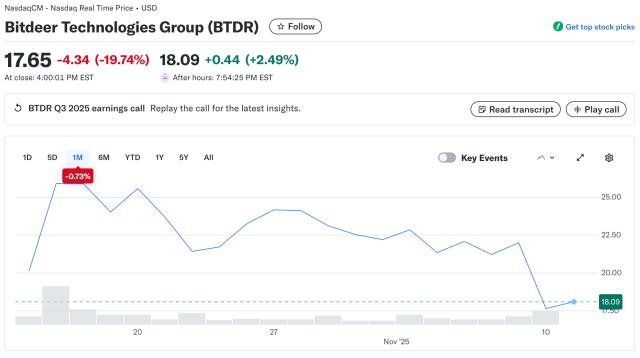Author: Banmu Xia
Foreword
Those who have followed my mid-term strategy sharing on Weibo over the past 23 years should remember that my market prediction framework was "cycle + liquidity (expectation) + technical pattern". Later, after adding Elliott Wave Theory to the technical analysis level, the issues at the cycle level became clearer. After more than a year of refinement, the predictions made by combining Elliott Wave Theory with the previous analytical framework have achieved an accuracy rate of over 60% in my own trading log. Therefore, I would like to share with you the market predictions for the next two years based on this analytical framework.
1. Cycle
Bitcoin has ended its traditional four-year cycle and entered the early stages of a bear market, as evidenced by the recent surges in many established altcoins. Every Bitcoin bull market ends with a massive surge in these altcoins. However, this bear market cycle may be significantly shortened due to the impending AI bubble in the US stock market.
Gold is in the midst of a major cycle of transition between old and new monetary systems. As long as this transition cycle continues, gold will continue to rise. Therefore, after this round of correction ends, gold can be held for the long term for 10 years.
The US stock market cycle is basically the same as the US debt cycle. According to the views of many economic experts, the US debt cycle has entered its later stage, but it is not over yet, because the key indicators of overheating have not yet appeared, while there are already some signs of overheating.
Will this AI revolution inevitably create a bubble? Almost certainly, because with every major technological revolution, participants are afraid of missing out, which leads to excessive capital expenditure, even massive borrowing, and the creation of a narrative.
The above forms the basis for a very bullish outlook on the next two years.
2. Liquidity (Expectations)
Regarding liquidity, we only need to look at the liquidity situation in the United States. Recently, due to the government shutdown and continued quantitative tightening, the liquidity situation in the US is extremely tight, with the SOFR-RRP spread reaching levels seen during the COVID-19 pandemic. This may be partly due to the recent decline in US stocks and Bitcoin. Therefore, I am not optimistic about the near-term prospects of the US stock and Bitcoin markets.
However, the impending end of the US government shutdown is expected to alleviate recent liquidity tensions, leading to a rapid market rebound. But this improvement alone is insufficient to sustain a bull market.
Starting in December, the Federal Reserve will likely stop shrinking its balance sheet and may even resume expanding it. At this point, the liquidity environment for US stocks and Bitcoin will continue to improve significantly. However, this is merely a return to normal liquidity, similar to October 2019. The real massive quantitative easing may not occur until May next year, after Trump takes control of the Fed, similar to March 2020.
The above forms the basis for the view that the market will fluctuate in the near term, rise slightly in the medium term, and surge significantly in the long term.
3. Technical Analysis
Bitcoin:
As shown in the chart, Bitcoin is currently in a significant wave 4 correction (the mainstream view is that wave 1 should be counted from the time Bitcoin appeared, but I'm using the low point of March 12, 2020 as the starting point of wave 1 because it won't affect the subsequent analysis, so I haven't changed it). Generally, wave 4 is a sideways correction, especially if wave 2 was a steep correction. This is why I expect Bitcoin to undergo a sideways correction in the coming months. Combined with the analysis of cycles and liquidity, it doesn't support a significant drop in Bitcoin's price.
My predictions for the low point of this bear market cycle and the high point of the next bull market cycle for Bitcoin can be found on my Weibo post from November 3rd.

gold:
As shown in the chart, gold is currently undergoing a correction following a 10-year bull market, and this level of correction is unlikely to be completed within two or three weeks. However, because gold is in a major cycle of transition between old and new monetary systems, and is supported by continuous purchases by central banks in emerging markets, the magnitude of this correction cycle will not be too large.
Therefore, the 0.382 Fibonacci retracement level at 3100 could be a target in extreme cases. More likely, the retracement will end between 3350 and 3750. If you're worried about missing out on the next decade of gold's upward trend, you can buy directly below 3750.

US stocks:
The US stock market is facing the greatest uncertainty during its correction, but given that the upward cycle is far from over, every pullback presents a buying opportunity.
The AI bubble is inevitable, but will it inevitably burst? This may be the fate of every technological revolution at its inception. Companies that borrow heavily and engage in highly leveraged acquisitions for fear of missing out may experience low returns on capital in the early stages of a technological revolution because the market is not yet perfect. Once this becomes apparent, cracks may begin to appear in the story. If, at this point, the Federal Reserve tightens monetary policy due to excessive liquidity leading to rising inflation, the bubble will burst.
Several indicators can serve as a basis for identifying the peak of a future bubble: 1. The emergence of exorbitantly priced mergers and acquisitions. 2. Rising inflation and a strong expectation of the Federal Reserve tightening monetary policy. 3. Stocks related to AI experience explosive growth, with valuations becoming extremely exaggerated.
Of course, this doesn't mean you should sell immediately when these events occur. Instead, you should be vigilant and make a profit-taking plan while enjoying the bubble.








